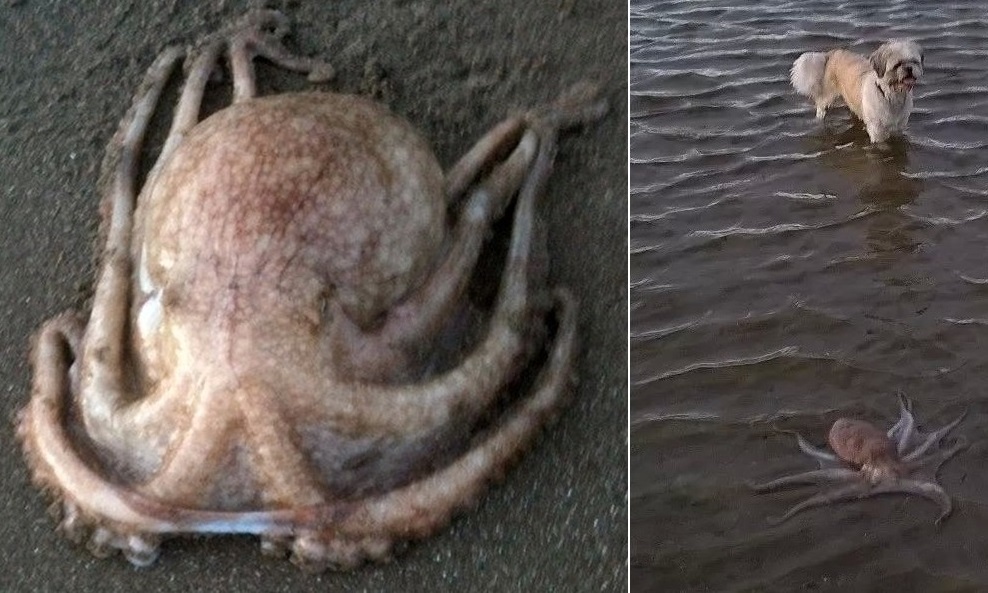The woman who returned a stricken octopus to water has revealed how she used a stick and a traffic cone to rescue the creature.
Irene Fox was walking on the beach with her friend when they discovered the octopus washed up on the beach.
The pair could see the octopus was still alive and Irene decided to help return the cephalod to the water.
She said the octopus’ eyes were open and it was clearly alive so she quickly decided to get it back to its natural habitat as soon as possible – although this involved some improvisation using a stick and an old traffic cone.
“It wrapped itself around the stick and then I put it in the cone,” she said.
“When we put it in the water it opened up fully and was quite beautiful.”
It is though the octopus was washed ashore by the storms earlier this week and Ms Fox said she was concerned what would have happened to it had it been stuck on the beach until high tide.
“We go down to the beach early every morning to walk the dogs. If we’d left it on the beach it would probably have been torn apart by dogs so hopefully it will survive. I wasn’t scared of it all”
She added: “Last year it was lots of starfish that were washed up onto the beach but I just wish I had known what was the best thing to do with it. I should have thought of putting it in water and carrying it to the sea that way.”
Calum Duncan, Scotland programme manager with the Marine Conservation Society, said : “This is the curled octopus, also known as the lesser octopus or horned octopus which is common on all British and Irish coasts.
“Typically solitary animals, they live in crevices in reefs and among boulders from the lower shore to 100m or so, though they have been recorded as deep as 800m, venturing out to capture their prey, principally large crustaceans like crabs and lobsters. SCUBA divers occasionally see curled octopus lying camouflaged on the seabed waiting to ambush their prey or, if very lucky, swimming through the water propelled by jets of water.
“Sightings on the east coast are not uncommon and this particular octopus may have been washed ashore by the tide.”
